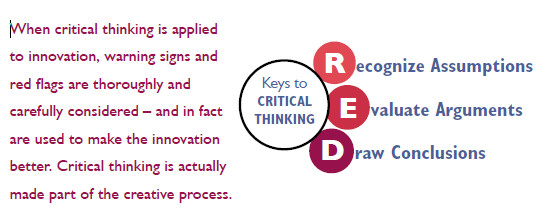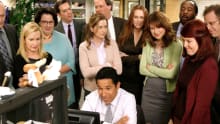Creative and critical Thinking: A recipe for Innovation

It is hard to cook a dish properly if you’re missing a key ingredient. Yet businesses often wonder why they have trouble getting innovation right. They know they need creative thinking– and lots of it. But they often lack the ability to transform their creative ideas into polished products for the real world.
Who can forget the Segway? Its inventor predicted that it would “be to the car what the car was to the horse and buggy.” His unbridled optimism blinded him to the fact that no one really wanted or needed a motorized scooter to get around on city streets and sidewalks – and that $3,000 was far too high a price point for most people to even give it a try.
Several examples demonstrate that great ideas are not enough. Innovation or in fact successful innovation, requires the application of critical thinking as well. This is the ingredient that so many companies miss. What is required is a robust integration of both creative and critical thinking, a back-and-forth, iterative process that fosters maximum creativity, while at the same time bringing a clear-eyed understanding of how an idea will play out.
Faced with today’s increased demand for innovation, many companies are searching for new ways to encourage creative thinking. At the level of the organizational culture, they are reinforcing the notion that it is OK if an idea fails – employees will not be penalized for thinking outside the box and striking out. Businesses are also adopting new techniques for brainstorming and synthesizing ideas. What many companies are less successful at, however, is bringing critical thinking into the picture at the right point in time.
How Critical Thinking Works
How can it be applied to the creative process without killing ideas before they are fully formed?
There are three essential elements of critical thinking:
- Recognizing assumptions: This involves separating fact from opinion. Too often, we accept unsupported information as accurate because it reinforces our own beliefs, because the speaker is particularly credible. Many innovations fail because companies assume that their ideas will instantly be embraced by the public – ignoring warning signs that might suggest otherwise.
- Evaluating information: This involves stepping back and objectively sorting through different positions. Another reason innovations fail is that people often let emotions - their own or others’ – color their decisions. Or, people may go along with someone else’s position to avoid conflict. It is essential to systematically review and evaluate information in an unbiased manner.
- Drawing conclusions: This involves bringing diverse information together to arrive at
conclusions that logically follow the evidence. Innovations will have a greater chance of success when people do not generalize beyond the evidence at hand, and are willing to change their positions as the evidence changes.
All three elements of critical thinking call for the ability to step back and take a hard look at the problems an innovation may face. One of the common features in the post mortems of innovation failures is that executives were told of potential problems, but for one reason or another went ahead despite the concerns.

Developing a Critical Thinking Workforce
It has long been debated whether creativity can be taught, but there is no doubt that it can be fostered within an organization, as noted above. By contrast, critical thinking is less abstract, and many companies have added classes and workshops that teach employees how to better question their own and others’ assumptions, evaluate arguments, and draw sound conclusions.
In fact, critical-thinking training – for all members of an innovation team – is essential to understanding how the process of bringing creative and critical thinking together works. Before the first brainstorming session even begins, both the more creative and the more critical thinkers need to be fully aware of the iterative nature of the process. With this understanding, the critical thinkers can hold back their judgments during the creative phases of the process, and join in the idea generation. At the same time, if creative thinkers have faith in the process, they will be more likely to embrace an objective evaluation of their ideas, one that puts emotion and ego aside. What emerges is a genuine collaboration that uses creative and critical thinking as twin engines to power innovation.
Another step companies can take is to ensure that the innovation teams are not confined to organizational silos. Both creative and critical thinking flourish best when there is maximum diversity. A broad knowledge pool and wide ranging perspectives provide rich soil for innovation. Nothing stifles innovation like the sameness of thought.
Excerpts modified from Pearson TalentLens White Paper – with the same title. Write to info@talentlens.in for the complete White Paper.













